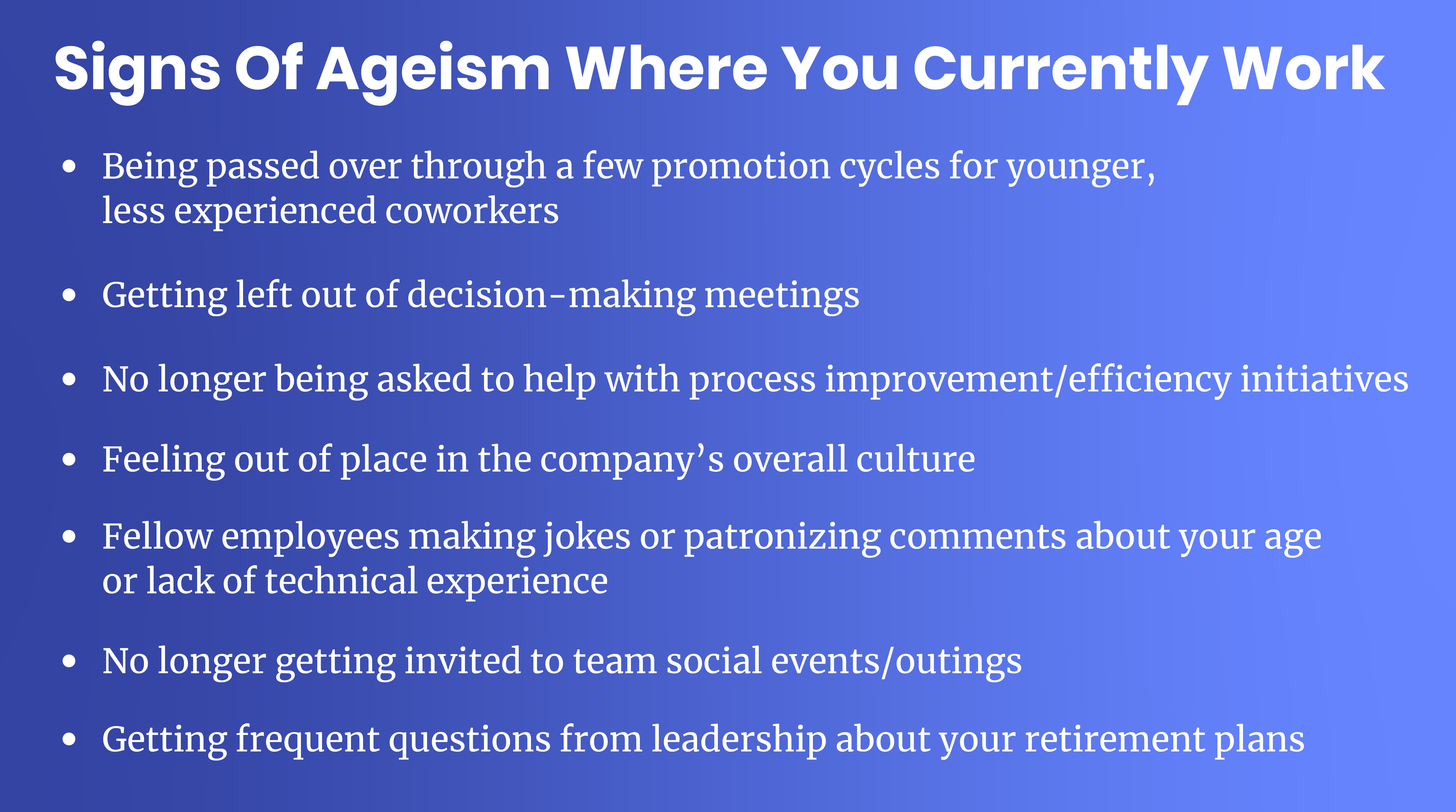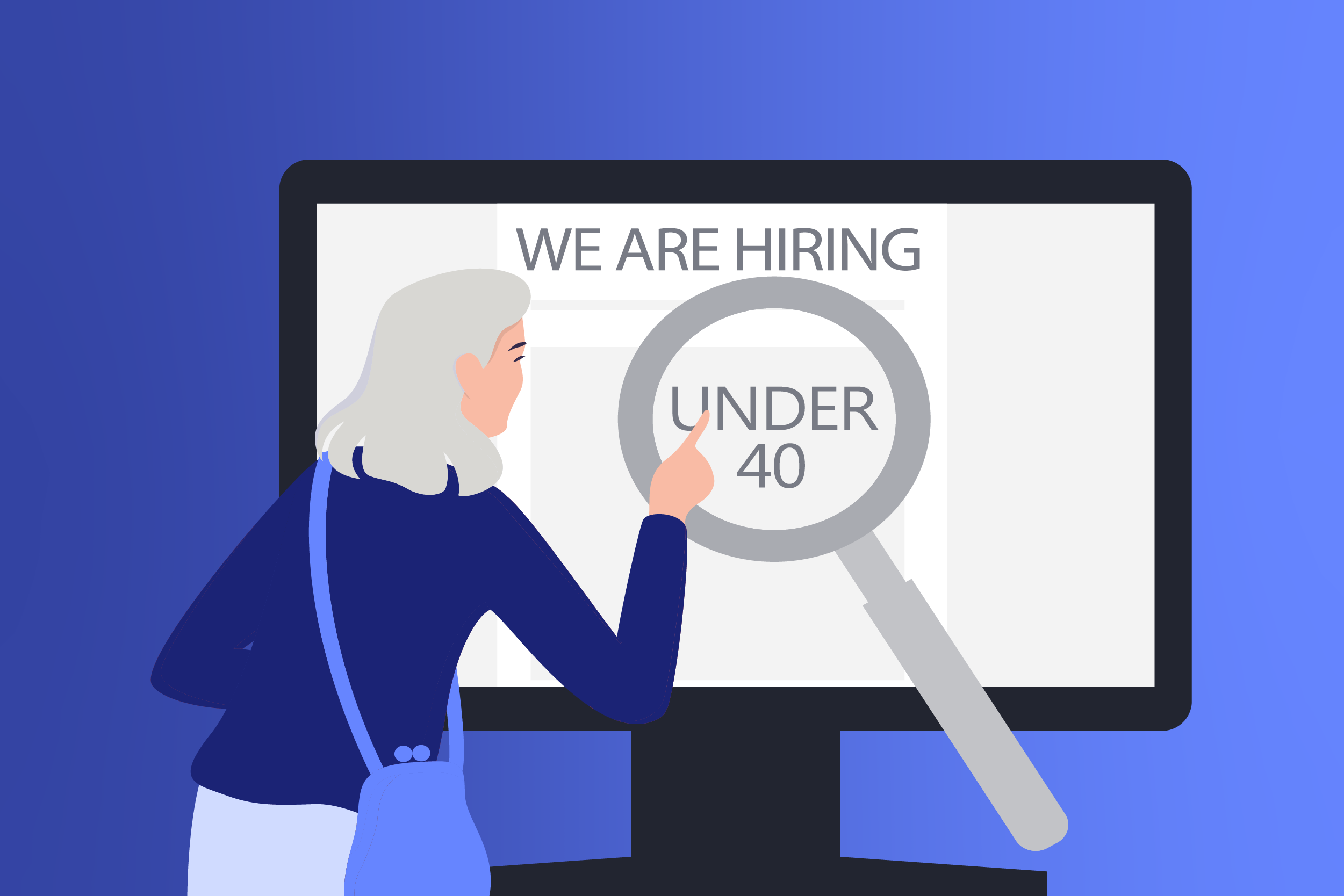When we first entered the workforce, some of us were typecast as the “kid” of the office and often treated like tech support, troubleshooting things that are obvious and essential knowledge to anyone using a computer. It was frustrating back then, but now we are either approaching or have reached the other end of that spectrum, and it can sometimes feel less like frustration and more like defeat.
The Mom Project recently surveyed community members aged 40+ to get their thoughts and feelings on ageism in the workplace, and the results were pretty eye-opening. Many participants said they feel like they’re at their best, professionally speaking, having a solid combination of knowledge, years of experience, and drive. However, these qualifications only come with age, and with age comes having confidence in yourself and knowing your worth. While we, as individual contributors, see these things as strengths, many employers and hiring managers don’t necessarily feel the same. Many of the people The Mom Project surveyed seem to think those strengths appear to be holding them back professionally.
When workplace diversity is more important than ever, ageism continues to be a big problem. So, what needs to happen? How can professionals 40+ years old overcome this bias and get the respect, salaries, and jobs they deserve?
What Is Ageism?
Officially, ageism, or age discrimination, is when an employer treats an employee or job applicant over 40 years old differently solely because of their age, according to the US Equal Employment Opportunity Commission (EEOC). Ageism can present in various ways, such as in recruitment or hiring practices, policy development, harassment tolerance, performance evaluations/reviews, layoff decisions, and just about everywhere else within a company. Bottom line: an employee’s age should not be a factor in making business decisions.
Ageism Laws & Employee Rights
The good news is that there are laws protecting employees from age discrimination in the workplace. The Age Discrimination in Employment Act (ADEA) prohibits employers from discriminating against 40 years old or older employees. It is a federal law and applies to any private business with 20 or more employees and all federal, state, and local government employees. If an employee believes they are a victim of age discrimination, they have the right to file a claim and even take their employer to court.
Ageism In The Real World
While the ADEA is an excellent protection to have, ageism in the workplace isn’t always evident. Even if it seems obvious as an employee, if you can’t prove in court that the law was blatantly broken without any grey area, then you’re kind of stuck. Most of the time, age discrimination is sneaky, where on paper, a company can technically be following the rules, but in reality, ageism is clear as day.
Here are some age discrimination scenarios some survey participants say they have observed or experienced:
- Jobs are being offered to less qualified, younger candidates because they will accept lower salaries and or are more willing to work long hours to the point of burnout
- Job candidates being passed over for being “overqualified,” as if having all of the abilities to do a job well is a weakness
- Being looked over for promotions or advancements because of assumptions based on age, such as an unwillingness to put in the work or a desire to retire soon
- Getting rejected from a job after meeting with a hiring manager who was younger than them
- In interviews, being asked about new technologies that are irrelevant to the job
- Doing well in phone interviews and getting rejected after meeting in person (when they show signs of their age)
- Having all of the qualifications and experience necessary for a job but getting rejected because they’re not a “culture fit” in a company where the majority of employees are young
For professionals who have experienced these kinds of situations, it seems glaringly obvious that someone considered their age when making some type of business decision. However, how do you prove to a judge that “culture fit” equates to “young” or that specific questions around technology are not about gauging a candidate’s experience level but rather a way to weed out people who they deem to be too old and, thus, unwilling to try/learn new things?
Red Flags To Look For & What To Do
The best way to avoid ageism in the workplace is to look for signs during the job search and interview process. Of course, there is no way to guarantee that you will or will not experience age discrimination with an employer, but if you notice any glaring red flags, then it’s probably better to look elsewhere. Some things that should give you pause during the search and interview processes include:
- The job ad is full of buzzwords and references culture a lot (think: organizations that want to be “hip” with foosball tables and beer fridges)
- Lack of diversity in employees and leadership (do a quick LinkedIn search)
- No mention of a commitment to diversity on the company’s website or career page
- Subtle “jokes” about age during a phone interview
- Probing questions to gauge your age, such as “When did you graduate high school?” or “When do you plan to retire?”
📖 Read more: Learn how to overcome ageism and career gap traps during your job search.
Signs Of Ageism Where You Currently Work
Even if you’ve been working at the same organization for a decade, that doesn’t mean it’s free of age discrimination. It could be running rampant, but you never noticed it because you weren’t experiencing it. Think back to when you first started working and were constantly asked to help some of your older coworkers navigate something as simple as Microsoft Word. At the time, you may have unconsciously developed a bias against them, assuming they were stuck in their ways and were begrudgingly learning the program only because they are forced to do so.
The chances are high that, at the time, you had no idea that bias was harmful. But now, you might be the one who needs help with a program that your fellow younger coworkers can navigate in their sleep. Are they thinking the same way you did all those years ago? Worse, is that what leadership is thinking? If so, it may be time to start applying to new jobs. Some signs that could clue you in include:
- Being passed over through a few promotion cycles for younger, less experienced coworkers
- Getting left out of decision-making meetings
- No longer being asked to help with process improvement/efficiency initiatives
- Feeling out of place in the company’s overall culture
- Fellow employees making jokes or patronizing comments about your age or lack of technical experience
- No longer getting invited to team social events/outings
- Getting frequent questions from leadership about your retirement plans

Of course, as with everything, these red flags could be something or nothing at all. It just depends on your circumstances. If you suspect ageism in the workplace, there is a good chance it’s happening even if you haven’t personally experienced it yet. And if it hasn’t happened yet, don’t just assume it never will. Keep pushing back, standing up for what you deserve because you do bring value to the business, and if, down the road, they are too blinded by your age to see that value, then there is undoubtedly another employer out there who will.
Facing Ageism Head-On
Age discrimination in the workplace usually doesn’t look like the black and white terms spelled out in the ADEA. It’s often subtle and possibly an unconscious behavior. Still, good intentions don't make the situation any easier to deal with. If you’re experiencing age discrimination at work or in your job hunt, you don’t have to take it. Speak up, stand out, and keep pushing for what you deserve. Eventually, you’ll land somewhere that sees you for your talent, not your age.
Give and get support throughout your career journey
Search for family-friendly jobs, connect with like-minded professionals, and access career development resources with The Mom Project. 




